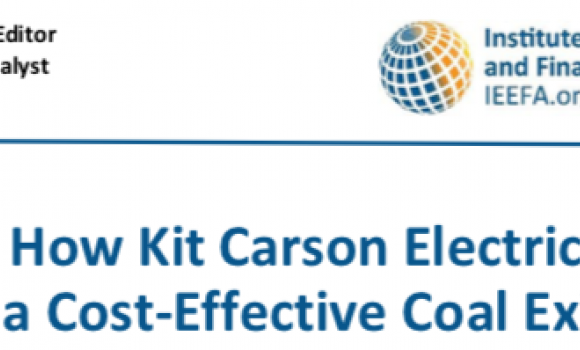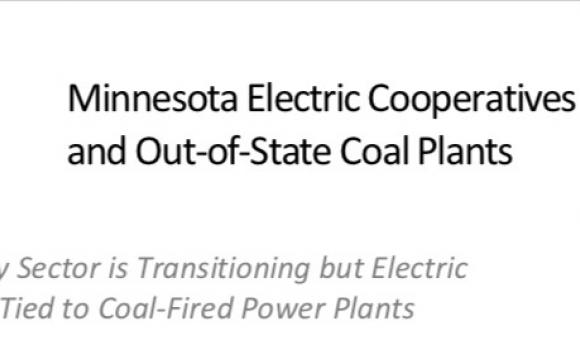
OVERVIEW OF G&TS AND DISTRIBUTION CO-OPS
NRECA’s 2019 Electric Co-op Facts & Figures states that there are 831 distribution and 62 Generation & Transmission (or G&T) cooperatives within the United States. See map of G&Ts above (it is a few years old and may have a couple G&Ts on it that have merged or no longer exist).
As the name implies, each distribution cooperative’s main focus is to distribute electricity to their member-owners, thus they maintain their local electric distribution system--if you are an electric cooperative member-owner, then your electric power comes from your local distribution cooperative. Distribution cooperatives can generate power, but some may have a limit placed on that generation by their contract with a Generation and Transmission Cooperative or other producer they buy power from. In much of the US, distribution cooperatives have come together to form Generation and Transmission or G&T cooperatives to collectively invest in power generation. Some G&Ts like PowerSouth Cooperative (formerly Alabama Electric Cooperative) were formed in the first half of the 20th Century (before 1950) and others like Basin Electric which spans nine US states was created later, in 1961, to take advantage of low-interest US Government loans to build coal plants. Basin Electric is a G&T made up of distribution cooperatives and other smaller regional G&Ts who purchase power from Basin.
Find information below about G&T All Requirements Contracts and short case studies of 4 co-ops who were never in a G&T, have gotten out of a G&T; or gotten around a G&T limit on local generation. And, at the bottom, is a podcast featuring leaders from 2 of the 4 case study co-ops.
Q&A ON ALL REQUIREMENTS CONTRACTS
(question and answer from a past We Own It forum post with answers from Matt Grimley who worked at the Institute for Local Self-Reliance (ILSR) at the time)
- Are all electric co-op contracts with G&Ts all requirements contracts?
Not all co-ops have all-requirements contracts (ARCs). Many have a smattering of partial requirements contracts and wholesale power purchases.
- Do all of these contracts allow for some local generation?
Not all contracts allow for self-generation. Until very recently Great River Energy's ARCs held that all energy had to come from GRE [GRE is in Minnesota]. Dairyland [in Wisconsin] may still be that way. Most municipal joint action agencies don't allow for self-generation.
- If so what percent (I’ve heard 5, 1, and 0.5% are standards) could be generated locally?
Self-generation exemptions run the gamut. I heard a 15% exemption recently. [Update: Tri-State co-ops have 5% self-generation limit, we've heard Basin co-ops have less than 200 kW local limit, and we are tracking contract length and self-generation limits here--please comment if you have info to add]
- How do these allowable amounts of local generation get set?
No idea how these amounts are set. The contract negotiation process is truly opaque.
- Are there other ways to get around these limits to local generation?
You could buy out the contract, like Kit Carson. You could seek PURPA exemptions, like DMEA (see more on both of these co-ops below). Some cooperatives around here [in MN] with ARCs have set contracted rates of delivery, meaning that their contracted energy is to be supplied only up to a certain point. That has given them the flexibility to start pursuing other energy sources. Theoretically, the limits to local generation could be worked out through contractual agreements such as the one that Fort Collins (a muni) worked out with its wholesaler.
GETTING OUT OF G&T CONTRACTS & A CO-OP THAT WAS NEVER A G&T MEMBER
1) People’s Electric Cooperative in OK terminated membership in G&T
People's Electric Co-op (PEC) terminated its membership in Western Farmers Electric Cooperative (WFEC) on March 26, 2013, but it’s unclear how they got out and if they had to pay a settlement to leave. PEC and WFEC have entered into an agreement that allows PEC to purchase some amount of wholesale power from WFEC at the member or cost-based rate through 2021. (PEC v WFEC 9/23/2014). It sounds like there was a secret settlement agreement between WFEC & PEC and there is little information available beyond some of the lawsuits filed by PEC against WFEC. PEC sued to regain rights to hydropower from the Southwest Power Administration, but sounds like it lost, specifically: “The agreement provides that as long as PEC continues to purchase any amount of power from WFEC at this rate, any federal hydropower made available to PEC by SWPA will continue to be for the benefit of WFEC and not PEC.” PEC also sued WFEC because they allege WFEC increased their rates when they didn’t agree to extend their contract for an additional coal plant that WFEC wanted to build. They claim that RUS required the extended contracts to approve the loan for the coal plant. More from the court order dismissing the case in 2010.
2) Kit Carson in New Mexico getting out of Tri-State G&T
They set up a 10-year contract with a new power supplier who bought Kit Carson out of their G&T contract with Tri-State Electric Co-op for $37M. More on that buyout here from Toas News and here from San Juan Citizens Alliance. I have heard, but I haven’t been able to verify, that this deal was facilitated because of a $30M investment from an anonymous angel investor into the new power supplier. It looks like a good investment and is expected to save Kit Carson more than $30M after accounting for paying back the $37M. Finding sources of capital to facilitate this at other co-ops could be a challenge, but also an opportunity to connect with new businesses and partners. [Update: see 2019 IEEFA report on the Kit Carson leaving Tri-State]
3) Delta Montrose in CO gets around G&T Contract requirement
Delta Montrose Electric Association (DMEA) won a FERC case against their G&T, Tri-State, allowing them to purchase more local renewable energy than the 5% that their contract allowed due to federal PURPA law: the Public Utilities Regulatory Policies Act of 1978 that requires purchases from small renewable energy facilities that meet PURPA criteria. More on that case here [Update: note that DMEA received an exit fee from Tri-State moderated by the Colorado PUC and is leaving Tri-State in May 2020, when it will have a new contract with Guzman Energy.]
4) Farmer's Electric in Kalona, IA is not part of a G&T
Some co-ops like Farmer’s Electric in Kalona, Iowa were never part of a G&T, and as a small co-op buying power on the market, they have more flexibility and incentive for producing their own power, especially that will reduce their peak. In 2018, they had more solar per utility customer than any other utility in the US! Read more about their success with solar.
This 100% Network webinar from December 2018 is a good resource to learn more about two of these co-ops including discussion with General Managers at Kit Carson and Farmer's Electric Co-op talking about their success with renewable energy; it is moderated by John Farrell at the Institute for Local Self-Reliance: https://drive.google.com/file/d/1PVfHs6jB7joHyZjAVVX8crFf6xJPRtMK/view
February 2020 Tri-State Update
Two electric co-ops have left Tri-State G&T over the last 5 years, two others have asked the Colorado PUC for a fair exit fee, and at least one other co-op is considering asking for an exit fee. Kit Carson Electric Co-op in northern New Mexico left Tri-State G&T in 2016; Delta Montrose Electric Association has negotiated a deal to leave Tri-State in May 2020. La Plata Electric Association and United Power, both co-ops in Colorado, asked the Colorado PUC for a fair exit fee in 2019 and are hoping for a price by summer 2020. Jemez Mountain Electric Cooperative in northern New Mexico has also asked for an exit fee. Some co-ops and non-profit organizations intervened in Tri-State G&T's application to become FERC regulated in 2019; FERC has rejected Tri-State's application to FERC, but Tri-State can re-apply.
February 2020 Basin Electric Update
At least one Basin Electric G&T member, McKenzie Electric in North Dakota has asked for the price of buying itself out of it's contract. McKenzie serves the Bakken region where there has been a boom in fracking that has increased their power demand. McKenzie purchases more than 40% of the power of Upper Missouri G&T, who is a member of Basin Electric and Upper Missouri purchases 30% of Basin's power). "In information from its legal firm, McKenzie Electric states it believes the rates paid to Upper Missouri are unjust and unreasonable because the rates include an element designed to pay for the substantial past and projected future losses suffered by Basin’s Dakota Gasification Company. Upper Missouri has not provided a policy for McKenzie to withdraw and stop paying the rates, should it so choose." From Minot Daily News article on October 15, 2019.


